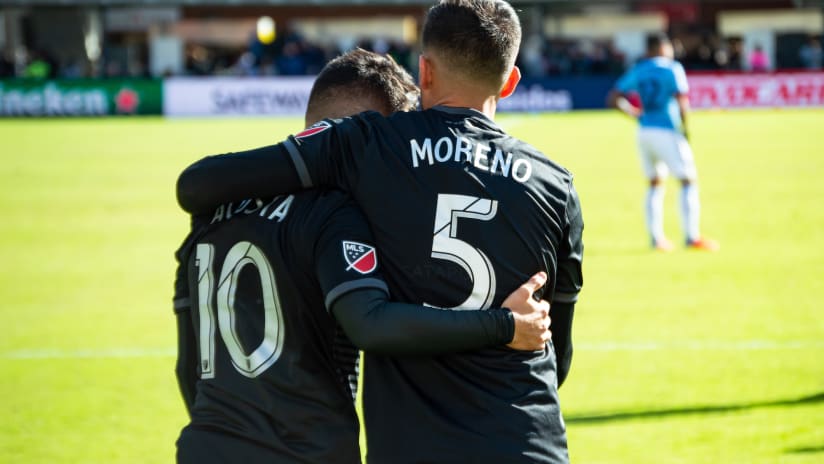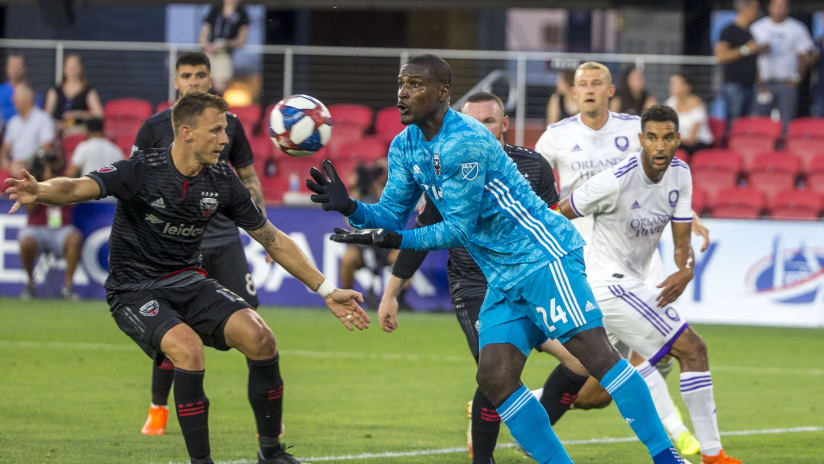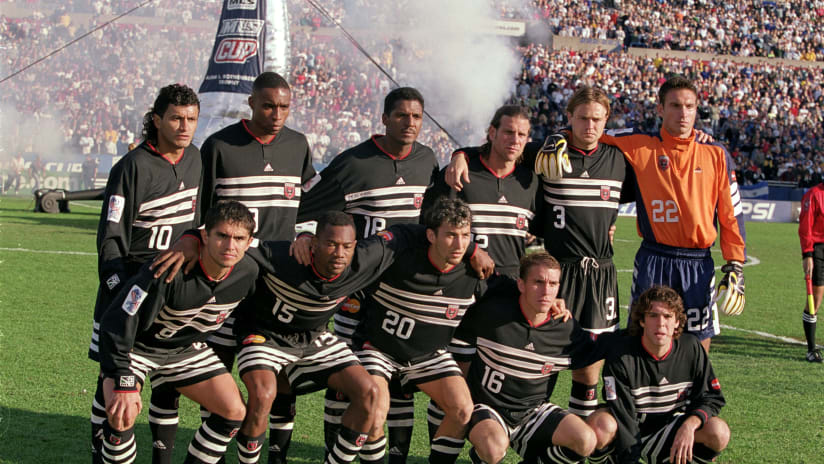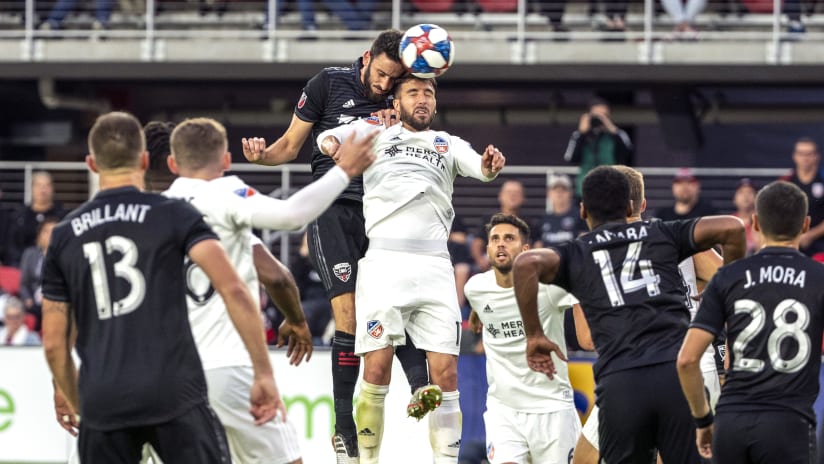If fans of D.C. United were uncertain about their team’s quality in midfield, the lineup trotted out by coach Ben Olsen against the Montreal Impact on Aug. 31 offered concrete proof.
It was on that afternoon that Olsen introduced a lineup tweak that would become ever-present for the remainder of the season. He shifted defensive midfielder Russell Canouse, back from a partially collapsed lung suffered the month prior, into a fullback position on the right side and continued to trust the pairing of Junior Moreno and new arrival Felipe Martins in the center of midfield.
“It starts with kind of Felipe coming in and doing a pretty good job,” Olsen said later of his decision to employ that lineup. “Now Russ could slip right back into that central role and I don’t think we’d miss a beat. But, you know, it’s collective and Russ is a guy we want on the field. It just helps that he’s played a little bit of right back in his time and he’s tactically a savvy kid and is selfless in his willingness to play out of position because he understands that’s what the team needs right now.
“He’s tough. He’s got high-focus. He’s got a lot of the qualities that we want in that spot. Different, maybe, profile of what we would recruit for that position, you know, as he’s not up and down (the flank). But he’s a heck of a defender and again, he’s a winner and he’s just a guy you want on the field.”
To put it another way, Olsen and his staff decided that Canouse, Moreno and Martins were certified members of the team’s best 11 players, and the structural adjustment of putting Canouse at right back allowed the Black-and-Red to field what amounted to its strongest overall lineup. This tweak, along with heroic performances from center backs Frederic Brillant and Steven Birnbaum, the ceaseless energy of converted No. 10 Paul Arriola and the improved consistency of wingers Lucas Rodriguez and Ulises Segura, ignited a five-match unbeaten streak that secured a second consecutive playoff berth for the club.
Now, with the 2019 campaign in the rearview mirror following a 5-1 defeat to Toronto, we continue reflecting on this year’s roster before general manager Dave Kasper unveils a new one in the coming months. This is the second in a series of stories analyzing the Black-and-Red position by position.
Next up, the central midfielders.
Junior Moreno
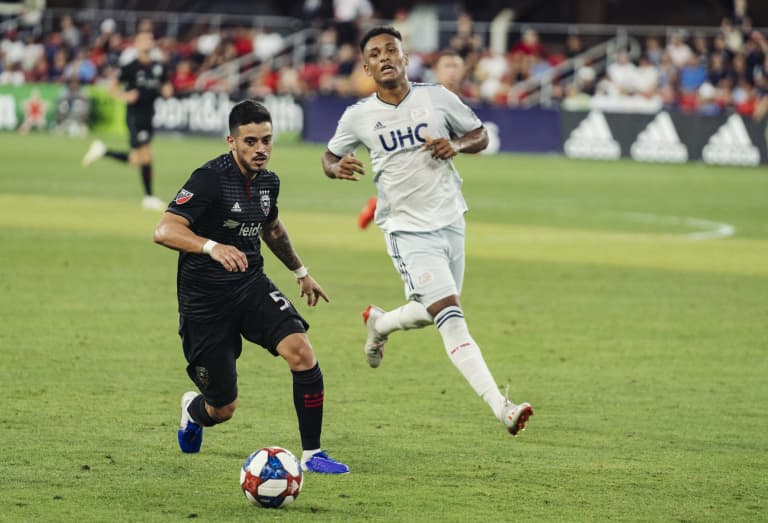
Moreno established himself as a mainstay in the center of the park for United in his second season with the club. He started all 29 games he played during the regular season and logged 2,551 minutes to lead Olsen’s midfield in that department. For a player with many positive traits, Moreno’s most important attribute might be his conscientious nature with the ball. Moreno plays the game thoughtfully and rarely gives possession away to the opposition in dangerous areas. He finished the season as United’s most accurate passer with an 88 percent success rate and ranked
17th in MLS among midfielders in that category. He also led the Black-and-Red in passes per game with 58.8 as a central figure in the buildup play alongside Canouse and then, later in the year, Martins. On the defensive side, Moreno finished second on the team in tackles won among midfielders with 36 (trailing only Canouse) and third on the team in interceptions. Perhaps the next step in his development is adding a bit more punch to the offensive end, where Moreno chipped in 3 assists but did not score. He launched only 12 shots all year and nine of them were either blocked or failed to hit the target, though Moreno did hit the post once. Even a slight improvement on the offensive side of the field would round out Moreno’s game and give opponents an extra player to worry about near the top of the box. His quality in the middle of the field is reflected by consistent callups and starts with the Venezuelan national team.
Luciano Acosta
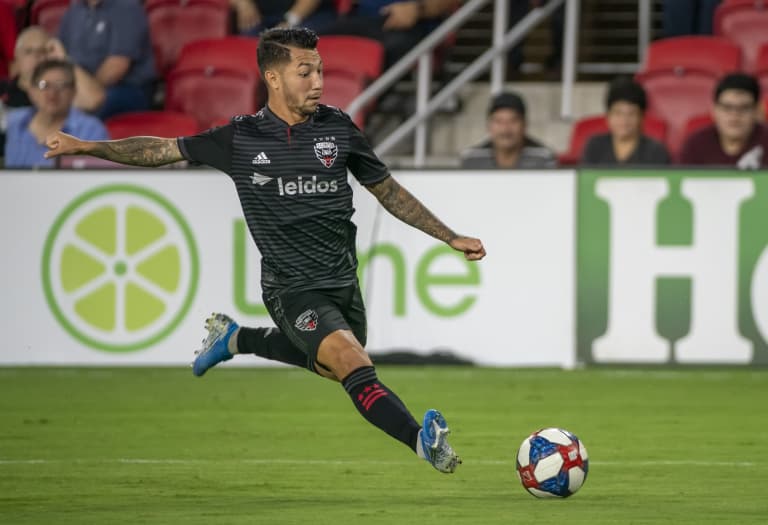
A year ago, Acosta catapulted his performance into the upper echelon of attacking midfielders in MLS by scoring 10 goals and dishing out 17 assists during a remarkable season for both the club and the individual — especially considering he combined for only 8 goals and 12 assists the two years prior. But carrying that kind of form into 2019 would have proven difficult for the majority of No. 10s around the league, and Acosta found it especially challenging. Though Acosta appeared in 31 games this season, he lost his starting spot in early August and averaged 13.4 minutes per game the rest of the year outside of a rare 90-minute appearance against the Philadelphia Union. His final tally of 2,119 minutes played was 634 fewer than what he logged last season — a difference of more than seven full games. Advanced metrics indicate Acosta was less influential in the final third than he was in 2018, when his chemistry with striker Wayne Rooney propelled the Black-and-Red from the depths of the Eastern Conference to a playoff berth. Acosta’s number of passes resulting in a shot for his teammates dropped by 30 this season despite an uptick in the percentage of possessions in which he was involved and the percentage of possessions that produced a shot after Acosta touched the ball in some fashion, according to data compiled by American Soccer Analysis. In other words, Acosta played a larger role in the general buildup for United but could not replicate his contributions in the final third by creating as many quality chances for his teammates. And defensively, where Olsen lauded the tireless pressing of winger Paul Arriola, who replaced Acosta at the No. 10 spot, there were issues with Acosta’s number of interceptions (which decreased from 0.7 per 90 minutes in ’18 to 0.5 per 90 minutes in ’19) and the number of times opponents dribbled past him (1.6 per 90 minutes in ’18 to 1.8 per 90 minutes in ’19). Nonetheless, Acosta remained the team’s most crafty midfielder in tight spaces against low-block defending, and Olsen turned to him as an impact substitute down the stretch.
Russell Canouse
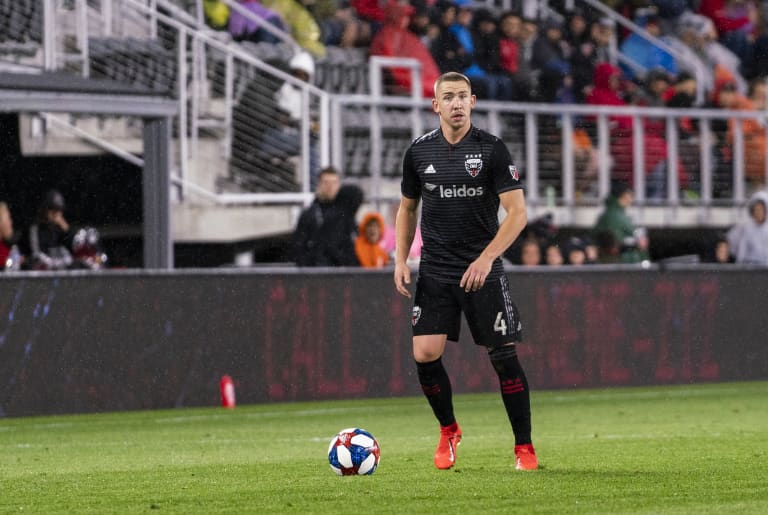
One of the unsung players of United’s season, Canouse’s willingness to shift from defensive midfielder to right back for the final five games of the regular season coincided with a five-match shutout streak that propelled Olsen’s team into the playoffs. He returned from a partially collapsed lung suffered in late July to fit seamlessly alongside Frederic Brillant, who occupied the right center back position. Canouse the right back provided increased cover, intelligent positioning and the aggressiveness to win balls both in the air and with his feet — all while the Black-and-Red developed a distinct identity for the final six weeks of the season. Overall, Canouse appeared in 26 games with 25 starts while logging 2,149 minutes as one of Olsen’s most trusted players. He finished third in passing accuracy behind Moreno and winger Lucas Rodriguez as an instrumental part of United’s buildup in possession, assuming control from the center backs and distributing the ball around the pitch as needed. Defensively, he ranked 11th among MLS midfielders in tackles won and 11th in total tackles while embracing the physicality of his position. He led the league in blocked shots by midfielders with 25 while ranking ninth in interceptions and seventh in clearances. As with Moreno, the offensive end is where Canouse can still improve, whether he continues at right back or returns to the middle of the field. Canouse did not score or provide any assists this past season and all 10 of his shot attempts missed the target. One of his only shortcomings as a makeshift right back was an unfamiliarity with when to push forward and join in the attack, often times leaving left back Joseph Mora as the primary source of service into the 18-yard box. Incremental offensive contributions from Canouse and Moreno would lessen the burden on United’s front four in the 4-2-3-1 formation Olsen prefers.
Felipe Martins
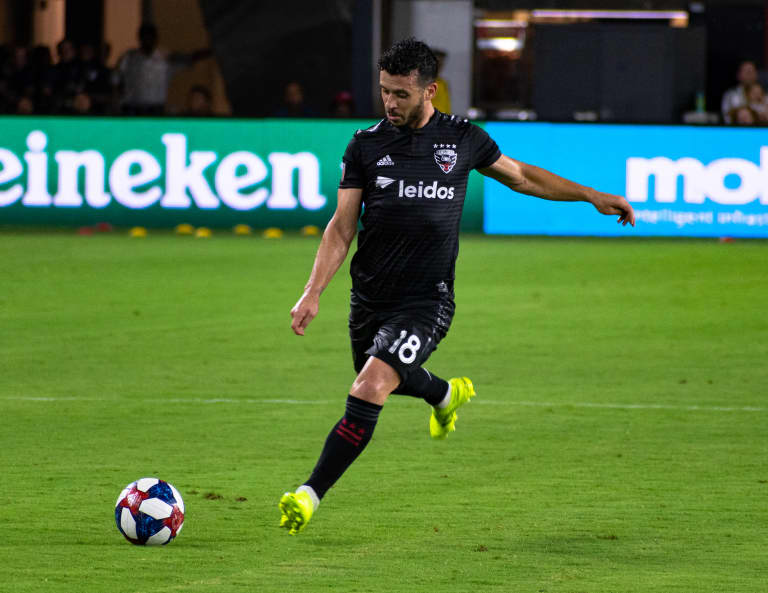
While striker Ola Kamara was certainly the flashiest of Kasper’s in-season acquisitions, Martins wound up being the most important in the context of 2019. He arrived from the Vancouver Whitecaps in mid-August and immediately slid into Olsen’s starting lineup alongside Moreno, keeping that spot for the remainder of the season. He played 90 minutes in seven of nine matches before suffering a first-half injury in the playoffs and leaving the field in tears, embraced by Olsen as he left the pitch. From the moment Martins arrived, Kasper and Olsen repeatedly referenced the “bite” they believed he would bring to the midfield. Martins arrived at Audi Field with the reputation for being someone his teammates love but his opponents hate, the type of player every team needs in one way or another. Martins proved his bosses right during his nine regular-season games for the club. He ranked tied for eighth in MLS in tackles by midfielders and tied for seventh in interceptions during that stretch, while also tying with Rodriguez for the most fouls conceded by a United player — a reflection of his physicality in midfield. Martins proved an adept passer as well and often assumed set piece duties when Rooney was not on the field. He was careful with the ball in possession, just like Moreno, and was dispossessed only three times in 776 minutes for the Black-and-Red, which led all midfielders and forwards in that category. Only Brillant and Birnbaum were dispossessed less frequently than Martins per 90 minutes.
Others
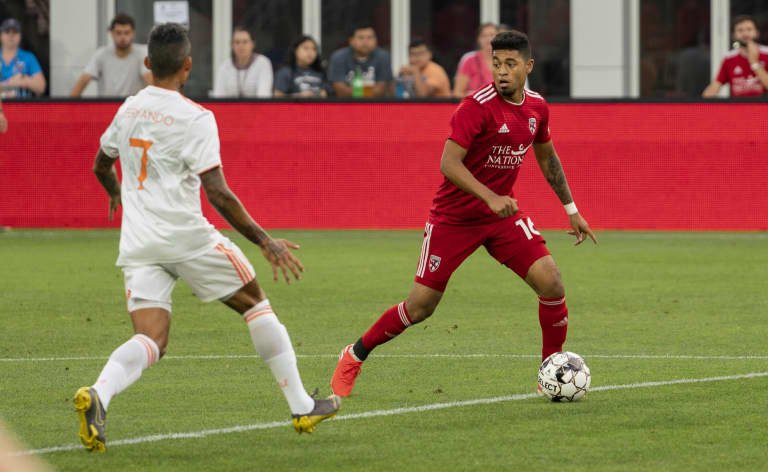
Antonio Bustamante — The homegrown player for the Black-and-Red became a central figure for the club’s USL team, Loudoun United, and logged more than 2,100 minutes in midfield. He scored five goals and tied for the team lead with four assists while also serving as the club’s primary playmaker with 42 chances created, four more than any of his teammates. Bustamante also led Loudoun in passing accuracy at 89.2 percent.
Moses Nyeman — Signed to a homegrown contract in early October, Nyeman appeared in 15 games for Loudoun with 10 starts. His passing accuracy of 86.6 percent compared favorably with that of Bustamante and serves as a positive sign for the 15-year-old, who has many years of development ahead of him. Nyeman scored 1 goal and had 1 assist in 871 minutes for Loudoun. He also trained sporadically with the first team.
Prior stories
Part 1 — The strikers

